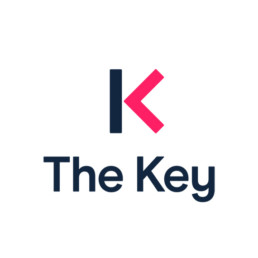5 Ways to Imbed Inclusion and Diversity in EYFS Lessons
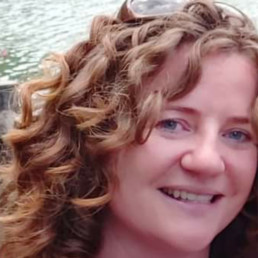
Written by Jess Gosling
An experienced international Early Years teacher, blogger and writer. She is currently writing a book for international teachers, 'Becoming an International Teacher'.
I am currently in my ninth year as an international teacher, and this article was written when I was working in a school with mostly local children in Taiwan. The problem I aimed to solve then was how to showcase and embed diversity and inclusion into our classroom environment.
Therefore, I have developed, and continue to develop here in Poland, a series of ways to bring up issues of diversity, gender, disability, and culture in a way that is relevant, informative, and engaging.
These are big topics for EYFS pupils but there are ways to bring them up organically alongside other areas of learning – often using texts to help naturally raise questions and discussions.
Cultural cues
Although in an international school, the children are from a similar ethnicity and therefore notice differences often.
One example of this was when we viewed a speech over which the guest had a strong Spanish accent. A child remarked, ‘that sounds funny’, and laughed.
As a class, we talked through her view. I related the experience to my own, speaking Mandarin with my ‘funny’ accent. I asked in this case if they would laugh at me. The class was in agreement that they would not. We explored the child’s perception and reasons why, overall, we have accents when speaking another language. I encouraged them to instead think about how smart the speaker was using a different language than their own. We created parallels with their own experience, as bilingual learners.
Gender
We have had a few instances where we have challenged and discussed gender as a class.
A boy in my class expressed his love of ‘Frozen’ and the character of Elsa in particular. He frequently leapt up to sing ‘Let it go’. Gradually, other boys have begun to join him. In this context, however, initially, there were some giggles. We unpicked this reaction and talked about how some girls love ninjas and superheroes and does it matter. Reversing the context helped those children understand that we are free to like whatever we like.
In another situation, I was concerned when several of my children were remarking that a new member of my team was a ‘boy’ as she had very short hair. I could see that the staff member was a little upset by the comments, so I stopped the whole class and I asked them to turn and look at the staff member. We do a lot of work on feelings and it was clear that she was upset. The children who had made the comments paused and looked at the floor. In this instance, I asked the class whether calling out gender names as a joke was a nice thing to do. The class, and the particular children involved, decided as a collective it was not. This behaviour was not repeated.
Discussing individuals who have taken different pathways
Integrity forms part of our school’s ‘learner profile’. To develop their understanding of this concept, I showed a recording of ‘We will Rock You’ by Queen and their frontman, Freddie Mercury, to prompt a discussion about him.
I wanted to illustrate how being honest and true to yourself is as important as being honest to other people.
We looked at how he took a different path in life than what he was expected to do, to remain honest with his hopes and dreams as a musician. The children were incredibly engaged in both the music and his life story.
Recognising cultural differences
When texts are selected carefully, they can illustrate a diverse representation of cultures. This includes environments, rituals, clothing, and religions that differ from my students. Following a book share, we discuss any perceived differences and similarities, encouraging questions.
However, it is important these stories show children living around the world, often with similar experiences to the children. One example is ‘The Proudest Blue’ about a little girl’s first day at school experiencing at the same time her sister’s first day wearing a hijab.
The little girl, Faizah, feels so excited for her sister but instead, other children use harsh words which confuses Faizah.
The children are drawn into the book by the fabulous illustrations. They picked apart what was unkind about the situation but also why others’ may make these remarks. Often I find children are not sure why people would say cruel things to point out a difference. We discussed together how certain words can not only affect one individual (Faizah’s sister) but also ripples to others, who hear and see them.
Showing differences, such as disability, as part of the ‘norm’
Furthermore, I endeavour to show texts which show children and adults with disabilities. One such example is ‘Rumble in the Jungle’, which shows a child in a wheelchair. These messages are more discrete as it is not a central aspect of the book. Additionally, I don’t always point them out. As these differences have been already discussed early in the year, I want the children to recognise, as with different racial identities that diversity such as disability is commonplace and part of our lives.
Indigenous Knowledge is Integral to Diversifying the Curriculum

Written by Rob Power
Dr Rob Power is an award-winning teacher, educational consultant and cultural historian specialising in global history and indigenous knowledge. Before returning to academia as a lecturer at the London School of Economics and Political Science in 2018, and more recently as founder of Powerful Histories, Rob was Head of History and Politics at a leading independent school in Oxfordshire.
Indigenous Knowledge should be central to curriculum diversity initiatives
On 13th September 2007, the General Assembly of the United Nations adopted The Declaration of the Rights of Indigenous Peoples. Enshrined in the document was a commitment to uphold standards for the survival, dignity and well-being of the Indigenous peoples of the world.
In recent years, there has been a growing recognition of the importance of incorporating indigenous knowledge into education. Indigenous knowledge refers to the unique knowledge, traditions, practices, and beliefs of indigenous communities. It is knowledge that has been passed down from generation to generation and encompasses ways of knowing, being, and doing that are rooted in a deep understanding of the natural world and the relationship between humans and the environment.
As schools throughout the world begin to consider ways in which to develop sustainable practices, the prioritisation of connection to our living environment occupies centre stage. It is in this context that Indigenous knowledge can be particularly impactful. Inclusion of non-appropriated Indigenous knowledge into our teaching – on issues such as the environment, community, climate, medicine, economics and science – isn’t just about creating a culturally relevant and culturally responsive curricula. It can also help to create a more equitable and inclusive learning environment that recognises and values diversity within our own communities.
The community-based approach to problem-solving that lies at the core of Indigenous knowledge systems should have a place in every school. Whilst honouring the robust and deep knowledge held by Indigenous communities, we help our learners to bridge divisions between cultures and constructed knowledge hierarchies and develop a holistic understanding of history, culture and the natural world. It can be a powerful tool for promoting social justice, encouraging pupils to critically reflect on the effects of forced assimilation, cultural genocide, and ongoing social and economic marginalisation of indigenous peoples.
Indigenous Knowledge in the Curriculum
Incorporating Indigenous knowledge into our teaching should go beyond rudimentary case studies. Prioritising the voices and experiences of indigenous peoples and communities, involving indigenous community members in design of curriculum and assessment materials, and utilising knowledge acquisition pathways of the communities we are studying is essential. Prioritising Indigenous knowledge thus not only affords an opportunity to diversify our curriculum, but to globalise our teaching.
Valuing, respecting, and integrating Indigenous knowledge into the curriculum involves developing an understanding of knowledge and knowledge acquisition within Indigenous communities. Oral tradition, ceremony, connection with the natural world and spiritual practice are integral to the continuation of Indigenous ways of being and convey deep meanings and concepts that are not easily translatable in Western codes of learning. It can thus be helpful to focus on four principal pedagogical approaches when teaching Indigenous stories and experiences: land-based teaching, storytelling, performance-based teaching and experiential teaching. The incorporation of Indigenous languages can also be beneficial.
When incorporating Indigenous knowledge into your curriculum, it is important that that knowledge takes centre stage. This means refraining from treating the study of Indigenous communities as case studies and instead placing those communities – and their ‘ways of knowing’ – as the lens through which we learn. Not only does this create an opportunity to truly globalise our pedagogy, but so too it affords space for interdisciplinary learning. Let us say, for instance, that rather than teaching the topic of ecology or biodiversity through a Geography or Biology curriculum, we instead delivered a series of lessons focusing on the semi-nomadic Chahdegal Balouch peoples in Iran. A focus on the community would not only allow the study syllabus-specific content – on environmental management, land distribution, sustainability and migration, for example – but would open opportunities to consider the interconnectedness of socio-cultural values and the living world. This is of course an isolated example, but think of the possibilities that a curriculum centred on Indigenous knowledge could offer.
Global Teaching in Practice:
Incorporating indigenous knowledge into the classroom is an essential step towards providing a more inclusive, diverse education. It is about reimagining what education means and looks like, developing an approach where knowledge hierarchies are deconstructed, disciplinary barriers are challenged and all communities are valued and respected. Collaborating with those communities is essential, not only in providing a culturally relevant education for pupils, but also as a means to develop culturally sustaining pedagogies that frame diversity in a truly global context.
My work with schools through the Global Teaching Project primarily involves supporting teachers to recognise the importance of Indigenous knowledge and de-centring dominant narratives responsible for the creation of exclusionary barriers. In a recent project at a school in West London, teachers came together to transform a Year 8 module on ‘The Americas Before Europe’. Together, they worked to challenge dominant Western narratives presenting Indigenous American communities as homogenous, passive, and situated within the past. Drawing on newly-made connections and interviews with Indigenous American artists and community leaders, teachers centred the perspectives of indigenous voices. Pupils responded by curating a virtual exhibition which celebrated the stories and experiences of Indigenous communities. This was not co-option of community knowledge but a conversation between learner and community members.
The Global Teaching Project, and its focus on Indigenous knowledge and global pedagogies, forms an important part of ongoing learning and self-reflection about issues of power and privilege. More work is sorely needed in this regard, not only in critical reflection of what our pupils learn, but also in consideration of the impact that diversifying a curriculum through content change alone can have in the long term.
AI: Ethics, Equity and Education

Written by Gemma Clare
Gemma is an experienced writer, specialising in education and child development. With a background as a former Inclusion Leader, Teacher, and SENCo, she is dedicated to sharing ideas that make a positive impact on the lives of children.
Maya sits down to do their homework. Instead of reaching for their textbooks, they turn to Artificial Intelligence (AI) to complete their research. Aiko sits down to assess their students. Instead of relying purely on their teacher-judgement and observation, he uses an AI-powered assessment tool.
AI provides an exciting opportunity for students and teachers to work in different ways and it’s becoming more established as a helpful tool in education. You can read numerous articles celebrating the benefits of AI for schools and colleges – as a tool for planning, assessment, personalised learning and more.
However, AI is presenting us with a new set of ethical issues. With concerns over bias, misinformation and unreliable sources, it’s become more important than ever for the education system to effectively teach pupils how to be critical of information.
The Bias Problem
Machine learning algorithms are only as unbiased as the data they are trained on, which means that they can perpetuate and even amplify biases in society. There are numerous examples of where AI bias has caused both small and large-scale discriminatory practices.
Take for example COMPAS, a tool used to predict whether criminals will re-offend, which wrongly predicted that black defendants were nearly twice as likely to do so as white defendants.
There’s also Tay, the Twitter bot from Microsoft that quickly became a sexist, racist and xenophobic holocaust denier after engaging with the public.
There are countless other examples, across healthcare, education, recruitment and more where machine-based bias has had a damaging effect on those with protected characteristics.
Think about how unchecked bias in AI technologies could impact the pupils in your school, and the wider influence this might have on society. For example, what would happen if an algorithm designed to predict student performance wrongly predicted that the black pupils in your class wouldn’t achieve as well as their white peers?
Misinformation
Another significant concern with AI is the prevalence of misinformation and false narratives. For example, despite scientific knowledge being used to train Galactica AI, ‘It spat out alarmingly plausible nonsense‘ such as incorrect summaries of research.
The increasingly popular ChatGPT-3 collates information from across the web, much of which is not factually accurate despite how assured it sounds in its delivery. It also seems to churn out multiple ‘sources’ which, when you look for them, simply don’t exist.
It’s now simple to create a very convincing narrative which is either partially or completely fabricated. This can be particularly problematic in the era of social media, where content can spread rapidly and without verification (either intentionally, or not).
Combine this with the flaws in bias and you can see how quickly AI can be at the forefront of disastrous consequences for equality and equity.
Take for example the case of ChatGPT-4 reinforcing sexist gender stereotypes when prompted to describe the education and career choices of a boy and a girl. In this example, the boy says “I don’t think I could handle all the creativity and emotion in the fine arts program.” and the girl replies that she can’t handle “all the technicalities and numbers in the engineering program”. Imagine your pupils using these tools to study and taking the answers as fact – reinforcing harmful narratives.
So, What Does This Mean for Educators?
You may be thinking, ‘these are problems for the developers of AI to solve, what have I got to do with this?’ and of course, developers need to be actively addressing these concerns. However, until every piece of AI technology is held accountable against rigorous ethical standards, these damaging flaws will remain, and we need to be aware of our own role within this.
Many of our pupils will be users of AI technology, both at home and in school. They’ll be accessing information and learning in a completely different way to previous generations. Educators play a vital role in preparing pupils for their future – and their future now includes AI technology.
As educators, we can empower our pupils to make informed decisions based on what they read and listen to. We have the opportunity to teach them to evaluate the credibility of sources and question information. Pupils can be explicitly taught to recognise and challenge biases when they encounter them and to understand the signs of unreliable sources, such as an over-reliance on anecdotal evidence.
Of course, teaching pupils to be critical of all information available to them is important, not just AI-generated content. With the prevalence of targeted advertising and propaganda circling the internet, it’s also important to teach pupils how to recognise the agendas of the content they encounter. This includes being able to identify political or commercial interests that may influence the information presented to them.
One way to achieve this is to teach pupils to identify language techniques, such as loaded language or euphemisms, that may reveal a hidden agenda. This can be particularly useful when analysing news articles or opinion pieces, where the author’s bias can be subtle but powerfully influential. By understanding how language can be used to manipulate readers, pupils can become more critical and discerning consumers of digital content.
This is an important conversation to be having in the education space right now. The ability to critically analyse the trustworthiness of content and separate fact from fiction is becoming an increasingly essential skill. If we’re not preparing the next generation of young people for this, we risk further aggregation of societal polarisation and inequality.
Educators have a unique opportunity and power to help young people to navigate the problems generated by new AI technology.
The next question is, are we adequately equipped to meet this challenge?
LGBT+ Inclusion for Catholics
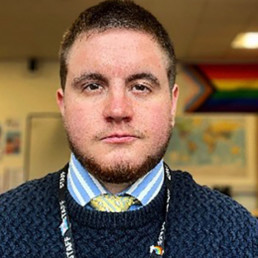
Written by George White
George White is an experienced teacher of RE and a Diversity & Inclusion Lead at a Catholic secondary school in Leicester. He holds a BA in Philosophy and Theology from Heythrop College, an MA in Global Ethics and Human Values from King’s College London and a Secondary PGCE in Religious Studies from the University of Cambridge. As an openly trans and Catholic educator, he has delivered conferences on LGBT+ Inclusion in Catholic Schools to the NEU as an LGBT+ rep for the East Midlands, Schools Inclusion Alliance, ASCL and more.
The official teaching of the Catholic Church, found in the Catechism, states that ‘[LGBT+ People] are to be accepted with sensitivity, compassion and respect. Any form of unjust discrimination in their regard should be avoided.’
One of the greatest privileges I have had in the last 12 months came from my role as one of the committee members at Quest, the charity aimed at LGBTI Catholics and their families providing pastoral support. In the summer term of last year, we hosted an online conference titled ‘LGBT+ Inclusion in Catholic Schools’ with Fr James Martin SJ who has always been a vocal advocate for the LGBT+ community despite the vast number of threats he receives online. In spite of that, he has received commendation from Pope Francis for his ministry towards LGBT+ Catholics when he said, ‘I pray for you and your work’ in a letter received in 2023 and prior to that Pope Francis thanked him for his ‘pastoral zeal and ability to be close to people with the closeness Jesus had’ in reference to his LGBT+ ministry. I was able to interview Father James Martin SJ in a conversation that lasted the best part of one hour and thirty minutes in which time he gave several helpful ways in which schools – and all Catholics – can be more inclusive of the LGBT+ community. I was set with my questions and after the interview has finished, I tried to process this into some simple tips that anyone might be able to take away from the session. I have settled on the following three, some of which have even been picked up by the Holy Father in the last few months.
Firstly, as Catholic educators and ministers, we are invited to listen to the stories and experiences of the LGBT+ community. In particular, we are invited to listen to the language that the community uses to describe ourselves and our stories. Pope Francis is the first Pope to say the word ‘gay’ instead of the outdated phrase in the catechism ‘homosexual’. When we listen to the stories of others, we are more easily enabled to accept with compassion, sensitivity and respect. Pope Francis encourages us to reach out to those on the peripheries – and very often – LGBT+ people can feel as though they are there. In the school resources provided by each diocese for Synod 21-23, pupils are asked the question, ‘who are the people who feel excluded and left out of the church?’ In my experience, lots of pupils labelled the LGBT+ community amongst others. From what we have seen of the synod responses, the contributions of LGBT+ people and women have been recorded, visibly – perhaps most obviously included for the first time in the history of the Church. I invite my fellow educators to recognise the language they are using in schools; use the preferred names of trans pupils, use ‘gay’ or ‘lesbian’ instead of ‘homosexual’ and invite LGBT+ Catholics to tell their story to pupils and staff. Reprint lanyard cards with pronouns and new photos for pupils who come out. Use LGBT+ people and symbols in marketing material. I was fortunate enough to be selected to be in a campaign for the Department for Education’s ‘Get into Teaching campaign where I spoke openly about being a transgender and Catholic teacher of Religious Education. These visible signs help pupils and staff who are LGBT+ to know that they are welcome and accepted, as church teaching says that we should be.
Secondly, there are many opportunities in the academic calendar that are fitting for both Catholics and the LGBT+ community. Fr James Martin SJ spoke about meeting young people where they are, accompanying them and celebrating their journey in life with them. For example, he has written that Catholics can absolutely celebrate Pride month, providing the focus is on human dignity. There are many ways to celebrate and/or remember the LGBT+ community throughout the year. For example, in my own diocese, we hosted a mass with the intention of remembering ‘Transgender Day of Remembrance’ on November 20th. This is a day where we remember those who have lost their life due to their transgender identity; whether by murder or suicide. We pray for the souls of the departed and also pray for an end to the persecution that they may have faced which led to their death. We wrote bidding prayers with this in mind and came together to remember this event with trans people and allies in our community. In addition, you may choose to look at material that goes out in February which is LGBT+ History Month. We wrote prayers for our morning registration in which we included the scripture from Psalm 139, ‘I praise you for I am fearfully and wonderfully made’ and we invited the school to come together for an end to LGBT+ persecution around the world. This kind of education helps us to prevent discrimination which might be directed towards the LGBT+ community especially from a religious perspective.
Finally, and perhaps the most obvious way to help contribute to the avoidance of persecution, we are called to stand up for the legal rights of our LGBT+ communities and relationships around the world. Pope Francis recently publicly spoke about the great injustice in several countries in the world who give a prison sentence or death penalty to those who are LGBT+. Prior to this, the Pope has advocated for legal same sex unions saying that LGBT+ couples have a right to be protected as families. This is perhaps a little harder for us to easily translate into life at school but not impossible. For a start, we can use clips of Pope Francis talking about these things to educate pupils on the realities of the world and what this means for LGBT+ people. We can also use it to guides our policy writing. As published by the Catholic Education Service in 2018 ‘Made in God’s Image’ we should deal with homophobic, biphobic and transphobic bullying the same way we do other discriminatory bullying. Our policies should clearly state that these types of behaviours will be treated in the same way as racism, sexism and other forms of discrimination. If we do not treat homophobic, biphobic and transphobic bullying in the same way, then we are guilty of breaking the law. Policies (such as those around uniform/make up and behaviour) should be gender neutral so that they apply to all students fairly.
The conversations I have had around LGBT+ Inclusion have led more generally to a review of the way in which we talk about diversity, equality and inclusion for all in our school. We host two ‘Diversity and Inclusion’ weeks a year where we have sessions from outside visitors as well as students sharing with their peers on things like race, faith, gender identity, sexual orientation, mental health, neurodiversity and the intersectional nature of lots of these characteristics. It has helped us to reassess the way in which we raise awareness to and celebrate our own diversity as a Catholic school community. We were commended in our recent Ofsted inspection as being an ‘inclusive’ school and we now have a dedicated staff and pupil group working towards our initiative to celebrate all human dignity in our community and ensure that everyone has a place – and more importantly a voice – at our table. We are guided by the principles of Catholic Social Teaching; solidarity, common good, participation and, of course, human dignity.
Reducing barriers to inclusion by casting a wide net
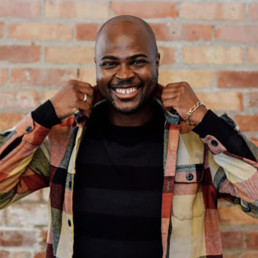
Written by Mahlon Evans-Sinclair
Mahlon Evans-Sinclair is an experienced educator with extensive participation in the fields of learning, professional & personal development, and EDI (Equity, Diversity and Inclusion).
Recently, I updated some guidance on the ‘use of pronouns’ as part of a wider report writing set of guidelines.
From the outset, I’ll say that I didn’t like the singular focus being placed on pronouns. Given that it’s an agitator for many, it felt like it was getting in the way of a wider message about how to write for a document that’s official in nature, but also personal in content. Additionally, the wording gave off a ‘need to know’ basis about any change/accommodation needed for the child in this regard. The twin issues for me in this are that (1) at a school-wide level, it requires the ‘push for assistance’ button to be pressed before ‘support’ can be given and (2) it can lead to a reactive ‘when prompted to’ attitude from teaching staff, with relation to promoting good practice of inclusion as default across the board.
So I changed the wording from a focus on pronouns to a wider acknowledgement to ‘Inclusive Language’ and in doing so, I added the following points:
- Inclusive language is affirming of all students, regardless of identity marker. (It reduces anxiety and barriers associated with identity presentation and supports feeling respected, understood and represented).
- [With regards to gender] Use of gendered terms are perfectly appropriate in many contexts (such as report writing) and don’t need to be consistently avoided, however consideration to use inclusive terms is encouraged across all interactions with students.
- Where a request has been made by both student and parent/guardian to use only the student’s name or [different] pronoun, [this will be communicated] directly.
In updating the guidance, there were a few things I wanted to contextualise, so separate from the document I gave further framing:
- Firstly, we should be working to reduce any barrier of inclusion related to accessing the feeling of being part of/belonging in a space.
- Thinking about it from the famously used and adapted ‘equality/equity’ image, we should be working to remove the fence completely (inclusion/liberation), rather than suggesting that we will treat everyone equally unless there has been a request made by the person facing the greatest barrier for an equitable ‘accommodation’.
- Furthermore, it’s understood that it’s not the responsibility of the person facing the oppression to educate others about it, so if we were to take that into account in this case, being inclusive in our language from the start takes the burden off of students having to ‘out’ themselves in highly visible and potentially unsafe way to feel validated in their identity.
- Finally, (in this case), moving the conversation away from being specifically on gender and reactive in its nature, we have the opportunity to move it to being about being ‘Intentional, Individual and Inclusive’ that both affirms the purpose of the space as well as those who are part of it.
Census Results Reaffirm the Importance of the New Vision for Religious Education
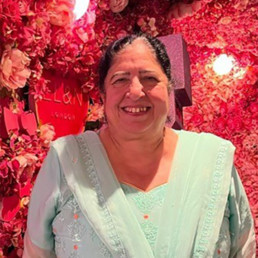
Written by Bushra Nasir CBE DL BSc (Hons.)
Mrs. Bushra Nasir is currently Chief Executive Officer (CEO) of the Drapers’ Multi- academy Trust (MAT) comprising of 5 schools in London. She line manages the Headteacher of each school and the MAT Executive team. All the schools are now judged at least Good by OFSTED and provide great opportunities for social mobility in an area of high deprivation.
Have you ever been asked about the meaning of life in the classroom? What about the origins of the universe or beliefs about what happens when we die? If you have then you have the same experience as the seven in ten parents who talk about these topics at home with their child. This was the finding from a new survey by Culham St Gabriel’s Trust, which found religion and philosophy was a hot topic at home. It’s unsurprising then that a majority of parents – almost seven in ten, saw value in the religious and worldviews approach to religious education.
Though the Census reveals that traditional religious affiliation is declining, society isn’t necessarily becoming less religious. Many people still engage with these questions because they are at the heart of what it is to be human. Societies have pondered these questions for thousands of years – and it is our privilege as teachers to continue this tradition and help the next generation explore both religious and non-religious responses to them. The reality is that everyone has a worldview. It is our unique way of understanding, experiencing and responding to the world around us.
The Census results have emboldened the renewed focus amongst educators on how we teach religion and belief in the classroom. Many of these conversations have been informed by the thinking behind the 2018 Commission on RE report that recommended both religious and non-religious perspectives be taught through a worldviews approach. What the Commission recommends is that the worldviews approach becomes the lens through which these ideas are taught.
What does this mean? To have a worldview is to appreciate the lived experience of religion or belief, and also that this may change over time. A worldview is a way of appreciating the pluralistic and diverse nature of belief in modern Britain. People’s worldviews may be made up of both religious and non-religious ideas. For example, ideas about how people should behave may be rooted in a religious belief, but may also have a moral or ethical perspective.
Research done by the think tank Theos prior to the Census confirmed this understanding of belief. It found that about half (51%) of those who identify as non-religious said they do not believe in God. Whilst the number of atheists is significant in its own right, we should not take ticking ‘non-religious’, in a census survey to imply people do not engage with some of the fundamental issues encountered in both religious and non-religious worldviews. They do so, but increasingly outside of a traditional religious affiliation.
A religion and worldview curriculum is about engaging with this idea in the classroom. Since the 2018 Commission on RE report, many schools have started to adopt these principles into their curriculum. I’ve witnessed first-hand the advantages. Students find that they have more of a chance to express themselves as well as engaging meaningfully with events they may already be reading about on their phones or in the news outside of school. RE teachers report finding the approach more academic, and a better use of their specialism. Meanwhile, senior school leaders such as myself appreciate the way this academic and knowledge-rich approach to the subject is consolidated and complements learning in English and humanities subjects.
What should I do if my school isn’t teaching a religion and worldviews curriculum? There are a number of very useful resources which teachers can access through the National Association of Teachers of RE website, to bring the curriculum to their students. However, as someone who is a Champion for RE in schools, I am familiar with some of the poor statistics around the teaching of the subject. More often than not, it’s up to us as senior leaders to ensure there is space for the subject on the timetable. Teaching RE to all pupils is a statutory requirement, and a number of schools ignore this by offering a tokenistic version of the subject. This does young people a disservice and denies them their entitlement to the high quality education in religion and worldviews that they need for life in the modern world.
At a recent debate in Parliament, I was struck by the number of politicians of all parties who made this precise point. Not only can high-quality RE play a role in helping young people get to grips with their worldview, it is also an important part of developing them as young citizens in modern Britain. MPs praised the subject’s ability to provide young people with skills of critical thinking, debating and empathy for the viewpoints of others as well as an appreciation that beyond Britain, the vast majority of the world still follows one of the major religious traditions. This is the type of young person we want to see leaving our school system – ready for modern Britain and the world beyond.
Returning to school in 2023, I look forward to the ongoing conversations students are having in their RE lessons about the changing nature of faith and belief in modern Britain. Of course, the subject of the Census has already come up in many RE lessons, and listening to students reflect on what the results mean suggests they are already getting to grips with their own worldview. Indeed, since these discussions, many have become more curious about the place of religion and belief in our society, and it has prompted them to question and explore their own worldviews, as well as those of their peers. RE lessons are contributing to a more positive, curious and intellectually stimulating environment in many schools. I’d like to see every student in every school experience that.
How Well Do You Know Your Governance Professionals?
On International Women’s Day (8 March) 2023, GovernorHub, part of The Key Group, released a research report delving into the salaries and working patterns of 1,298 governance professionals working in schools and trusts.
It sheds light on the often-hidden roles of governance professionals, who this research reveals are indeed predominantly female, and explores how their salaries fare against those in comparable roles in other sectors.
See the key findings of the report below, and some recommended actions to help overcome pay disparities to support the recruitment and retention of talent in these important roles.
Key findings
The survey of 1,055 clerks, 100 governance co-ordinators and 143 governance leads found that:
- Around 90% of governance professional roles in schools and trusts are filled by women, making this one of the most female-dominated careers in the education sector and beyond
- The majority (85%) of clerks surveyed reported working part time – for governance co-ordinators it’s 49%, and for governance leads it’s 37% – which is far higher than the government’s national employment data at 23% of working-age people working part time in 2021
- Almost a third (30%) of all female governance professionals surveyed reported having taken a career break due to caring responsibilities, compared to 4% of male respondents
- Clerking roles in schools and trusts appear to have the largest salary discrepancies, with a median salary of £25,000 pro-rata, which is substantially lower than the median salary for equivalent roles in the local government (£33,782), public services (£33,636), and not-for-profit (£31,620) sectors
- Over half (54%) of clerks surveyed reported feeling ‘underpaid’ or ‘extremely underpaid’; comments from some respondents suggest this is often caused by needing to work more hours than are allocated to each task or meeting
- A lack of visibility and understanding of clerking roles, combined with their increasing complexity, might be contributing to the stagnation of pay felt by many clerks surveyed
A quote from one part time clerk respondent illustrates a lack of awareness, in some cases, of this role:
“Having worked for 10 years with the school, I had to ask for my salary to be reviewed a couple of years ago and the rate was upped. I checked my letter of appointment and it said my salary would be reviewed every year – I pointed this out, but it isn’t reviewed every year. I think my role falls through the cracks. As a part time employee, I don’t know if I am missing out on any other work benefits, pension etc., and whether I’m entitled to equipment to help me to do my job.”
Recommendations
To help improve working conditions for governance professionals and, in doing so, help recruit and retain valuable talent for the sector:
- Employers – should use annual appraisal meetings as an opportunity to review and benchmark pay, and follow government guidance on reducing your organisation’s gender pay gap
- Self-employed individuals – should negotiate hourly rates in line with benchmarked salaries, as well as hours assigned to each task
- Everyone working in governance professional roles – should set and share a working-time schedule to help improve work/life balance, and join a union, to help give them a voice and professional advice
Conclusion
GovernorHub’s research report gives governance professionals in schools and trusts the evidence to show what they’re worth, and to look to align their pay with equivalent roles in other sectors.
The report recommends that employers and individuals take action to overcome the pay disparities, and ensure that governance professionals are recognised and rewarded appropriately.
By taking these actions, the education sector can strengthen its workforce of governance professionals who play such a vital role in supporting our schools and trusts. Championing these key roles will only serve to support the best possible educational outcomes for our children and young people.
Hair Equality in UK schools: Why Hair Is More Than “Just Hair”?
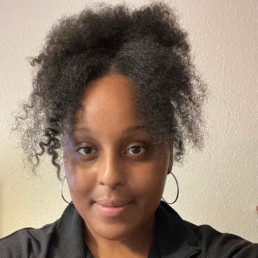
Written by Tori Sprott
Tori has a BA in Philosophy and an MA in Policy Studies in Education. She has a particular interest in Sociology of Race and Education and exploring counternarratives from a racial perspective.
Introduction: Equality in Schools
School is a place where young people spend most of their lives. Schools should be safe spaces for young people to learn and develop their values, self-esteem and life skills. It should be a space where equality is championed and held high as a core value, but unfortunately, this isn’t always the case. This blog will focus on a specific type of inequality that Black and mixed-raced people are often faced with in school, hair discrimination, and will provide schools with some tools for navigating this issue.
In this blog, I will introduce the concept of hair discrimination with a brief outlook on Afro hair and its significance. I will also be referring to real examples of young Black and mixed-race people who have been punished by schools for wearing natural hairstyles. In this blog, I will be using the terms ‘natural hair’ and ‘Afro hair’ interchangeably, referring to the natural kinky texture of Black people’s hair. It is worth mentioning here that in acknowledging Afro hair, we must also acknowledge the diversity within this term, as there is no single natural hair texture.
Hair discrimination: a brief history
On the surface, many may assume that hair is just that: hair. Why the big fuss over something so trivial? The history attached to Afro hair is vast but also a huge identity marker for Black and mixed-race people that many aren’t aware or conscious of. Historically, Afro hair has been a symbol of background and status, a site of oppression, something that required alteration, particularly post-transatlantic slave trade, and a symbol of Black power (Jahangir, 2015). This indicates that the perception of Afro hair has changed throughout history – once being seen as beautiful and powerful, then being seen as the opposite during the transatlantic slave trade where many Black people had their hair shaved off. This led to many people with Afro hair (chemically) straightening their hair to avoid the abuse and stigma post-transatlantic slave trade, and also led to a period of time where people with Afro hair reclaimed power and pride over their natural hair as a response to racism and hair discrimination. The impacts of these ever-changing perceptions are wide-spread and still exist in present day.
The impact of the transatlantic slave trade on how society perceives Afro hair is still present today, resulting in Black and mixed-race people feeling as though they need to straighten their hair to “fit in”, with concepts of ‘good’ [looser curls, softer texture] and ‘bad’ [kinkier more dense hair textures] hair formulating ideas about the acceptable appearance of Black people’s hair (Robinson, 2011).
Hair discrimination in schools: UK context
Research from World Afro Day Hair Equality Report (2019) showed that 82.9% of young people had experienced having their hair touched without consent, and 58% experienced being on the receiving end of uncomfortable questions. These are troubling statistics. These occurrences can be offensive because it points out that there is this sense of difference that inclines those without Afro hair to touch it or ask questions that could leave people feeling alienated. If there were more education on Afro hair, perhaps the occurrence of these uncomfortable encounters would reduce, and overall comfortability for those with Afro-textured hair would increase.
I can remember various occasions as a young Black person being told, “you should straighten your hair”, typically by people who did not have Afro-textured hair. This is quite offensive as it suggests that your Afro-textured hair is perhaps incomplete or undone. It is unfortunate that hair discrimination exists, and we see such incidents occurring in UK schools with Black and mixed-race pupils facing exclusions due to culturally dismissive uniform policies.
Ruby Williams is a young person who faced hair discrimination at school in London. She was told that her hair was a distraction and “too big”, and as a result was sent home on multiple occasions, disrupting her learning. She also speaks on the pressures to straighten her hair in her younger years as natural hair was never represented around her. The problems started when she decided to stop straightening her hair, and she was routinely targeted by the uniform policies that the school had in place, which have since been removed. Ruby’s family took legal action against the school, however, it ended with an out of court settlement (Virk, 2020). In March 2021, students at Pimlico Academy staged a walk out due to uniform policies banning hairstyles that “block the view” of other students (BBC, 2021). In this context, students are having to take matters into their own hands in order to be heard, but this commitment to equality needs to be taken further by those who have authority in policy-making processes.
Jewellery Quarter Academy in Birmingham recently adopted the Halo Code – coined by the Halo Collective as a means of committing to hair equality in workplaces and schools (Newsround, 2020) – stating that “all students should be able to come to school being themselves and feel proud of their identity. That is why we are proud to sign up to the Halo Code” (Chamberlain, 2021).
So, where do we go from here? What can schools do to prevent this from occurring in the future?
Recommendations for school policy – how can we tackle hair discrimination in schools?
- Schools must ensure that their uniform policies surrounding hair styling do not have a disproportionate impact on Black children. Avoid exclusions or any kind of behaviour punishments that would further marginalise that child. Thinking about uniform policies, the language used in such policies (for example, ‘professional’ – what is being suggested if Afro hair isn’t deemed professional, and what impact does this have?), why they have been implemented, and whether they can be adapted for inclusivity. Schools can consult with stakeholders in order to better understand the implications of language used within a policy.
- Schools must create an environment of inclusion and commit to embedding understanding of diversity in the school ethos. Understanding how certain language and descriptions about Afro hair can be problematic. Actively challenging stereotypes and assumptions about Afro hair[styles] that reinforce racist ideas about groups of people. Members of staff should be aware of discriminatory language [amongst pupils and staff] regarding Afro hair and ensure that this is not tolerated or acceptable. For example, the idea that Afro hair is ‘messy’ or ‘not done’; the idea that straighter hair is more ‘professional’ than Afro hair; asking a Black or mixed-race student/staff member if their hair is a wig if it is long or straight.
- Make a pledge – As mentioned earlier, The Halo Collective are a group of campaigners who advocate for hair equality in schools and workplaces. Adopting their Black Hair Code shows commitment to rejecting hair discrimination. A number of schools in the UK have adopted this code. Schools can also make their own pledges about how they will tackle the issue of hair discrimination within their setting and embed this in the school rules.
References
BBC (2021) Pimlico Academy pupils stage protest over ‘racist’ uniform policy, BBC, https://www.bbc.co.uk/news/uk-england-london-56594570
Chamberlain, Z. (2021) School’s bid to end hair discrimination after shocking number of black students face name-calling, Birmingham Mail, https://www.birminghammail.co.uk/news/midlands-news/schools-bid-end-hair-discrimination-21935497
GOV.UK, Discrimination: your rights https://www.gov.uk/discrimination-your-rights
Jahangir, R. (2015) How does black hair reflect black history? BBC. https://www.bbc.co.uk/news/uk-england-merseyside-31438273
Newsround (2020) Halo Code: What is it and how does it protect afro hair? BBC, https://www.bbc.co.uk/newsround/55249674
Robinson, C. L. (2011) Hair as Race: Why “Good Hair” May Be Bad for Black Females, Howard Journal of Communications, 22:4, 358-376.
Are the Equality Laws fit for purpose?
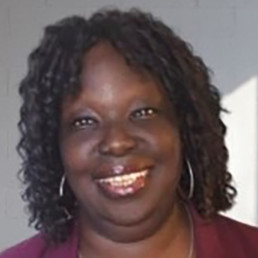
Written by Shola Adewale Sandy
Shola is the proud author of the debut novel called ‘ICE, the trilogy’ which stands for I Can Explain, it’s her memoirs that follows her journey in the educational system as a black women professional and the importance of stopping systematic discrimination, unfortunately she has experienced and witnessed over the years in inner London schools.
When I first walked into a secondary school in inner London, as a black member of staff, I didn’t think anything of it, after all there were others there and they seemed to be doing fine on the surface… I rolled up my sleeves, I was committed, prepared and ready. To the best of my ability, I would do good by those students. I felt this was my calling in life…
I looked at the decorated reception and walked around the massive assembly hall. It was early in the morning, I was enjoying the silence, but excited at what was to come… this is where dreams and aspirations are developed for those young minds and maybe for me too…
Fast forward and they soon sprout up in Year 11, leaving to go out into the big wide world. Having gone through the school system knowing what equality, fairness and hard work really looks like. This is what we teach them, isn’t it?
So what happens, if you find yourself in a situation where you were not being paid the same as your white counterpart or given the same opportunities, despite being a dedicated and a hard working member of staff?
That was me! Can you imagine? I initially thought nothing more of it, after all we have laws to protect people like me in a work environment. I was not even in a union because I was so confident that fairness and common sense would prevail!
“This must be a minor mistake; it will get cleared up in no time!” I said to myself over and over again, as the years went by.
Before you all go for me, I am not generalising, but if you happen to be in a situation and the odds were against you like I was, being in front of such a cantankerous headteacher, what would be your choices?
Remember, you are reminded daily by the micro aggressions towards you, grating away at your skin, getting right to the very core of you. You are nothing more than a mere irritable speck on their shoe, that they can’t seem to get rid of. So where do you go from there, if you please…
Ignore and march on, hoping and praying things would improve – check
Informal discussion with line managers – check
Discussions with other school leaders – check
Union rep – check
Informal discussions and meetings with headteacher –check
Human Resources – check
Union rep again – check
School Governors – check
Formal meetings with headteacher – check
Headteacher’s Peers and other leaders in the community – check
Local Authority – check
Tribunal system – I can’t disclose everything here folks, you will have to read my memoir….
And all you can think of to do in-between!
What do I have to do to be treated fairly, was the question I kept asking myself? As I made my way through the above list.
For most people, their response probably would be:
” I can’t deal with this; I would have been straight out the door!”
Yeah right, I wish it was as easy as that! I was invested in those students for better or for worse! (It’s an unwritten contract when you work in those types of inner city schools)
“No way! I would have to be dragged away in chains screaming and protesting, I would not leave those students by choice!”
Anyway, it was the principle of the whole damn thing! After all, why did our forefathers sacrifice and suffer for, all those years ago, surely so we wouldn’t have too now!
Yes, leaving and getting a job in another school would have been an option, but that’s another conversation to be had. In reality, it is much harder to successfully achieve this, as we need that all important, crucial reference from your former headteacher! Could they be trusted to give you a glowing reference despite your differences, hmm, a lot of people might hesitate at leaving that in the hands of such a person! I know I certainly would!
When I look back, I realise that it is also the system to blame. Giving permission for gross misconduct to take place within Education, allowed that specific headteacher to have the confidence to treat me that way. Knowing profoundly, that they had the power and would ultimately get away with their treatment of me, especially with the support of their loyal allies.
Thankfully, not all headteachers are like this, but you only have to come across one in your lifetime as a black person and trust me you will never forget the experience in a hurry!
Faith is too often seen as a barrier to LGBT+ inclusion, so we’re launching new resources to change this
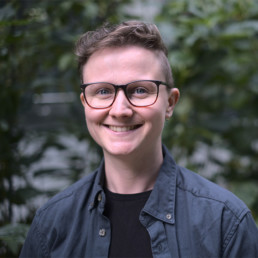
Written by Amy Ashenden
Director of Comms and Media/Interim CEO, Just Like Us, the LGBT+ young people’s charity.
As the new Interim Chief Executive of Just Like Us, my aim this year is to ensure more schools than ever have the tools they need to support their LGBT+ young people.
For several years now, School Diversity Week has been celebrated by so many incredible educators across the UK, showing young people that being LGBT+ is nothing to be ashamed of. Last summer, more than 5,000 primary and secondary schools took part. This year, 26-30 June, I believe it’s vital that schools with intersecting communities have the resources they need to celebrate School Diversity Week.
From faith schools to Welsh-speaking communities and primary schools, Just Like Us will be providing new sets of resources that cater specifically to the educators that need tailored LGBT+ inclusion tools the most. When half of young people (48%) tell us that their school hasn’t given them positive messaging about being LGBT+, it’s clear to me that we have a long way to go and that to change this, schools need the right kind of resources that speak to their individual ethos and community.
Our new independent research has found a third of teachers (30%) say faith has been a barrier to discussing LGBT+ topics in school. More than 7,000 UK teachers took part in our survey this February, revealing an indisputable need for resources that are both LGBT+ and faith inclusive.
That’s why we’ve launched a new series of faith and LGBT+ inclusive resources for Anglican, CofE, Catholic, Jewish and Muslim school communities. From primary assemblies to worksheets and videos featuring LGBT+ young people talking about their faiths, the resources are designed to give educators the tailored tools they need to celebrate School Diversity Week in a way that makes sense for their community. We have also worked in collaboration with LGBT+ faith-led organisations Keshet, Hidayah, One Body One Faith and Quest to develop these resources in a way that really speaks to the communities they’re designed to support.
In faith schools, the research found that 46% of teachers had previously found faith to be a barrier to talking about LGBT+ topics in the classroom, compared to 25% at non-faith schools. I believe it’s vital that we now provide the tools educators at faith schools need to support their young people who may be LGBT+ or have LGBT+ families.
Interestingly, just 3% of headteachers said that faith has always been a barrier to discussing LGBT+ topics.
A lack of LGBT+ inclusion in schools is so rarely about a lack of willingness but instead due to a historic lack of suitable resources that empower educators to get started on their journey. It’s also important that we remember that LGBT+ and faith communities are never totally separate – as you’ll see in the resources, faith is very important to many LGBT+ young people and to suggest that there’s no overlap just isn’t reality. You can absolutely be LGBT+ or an ally and belong to a faith – being Jewish and a lesbian, I know this reality well.
It’s also really important that we don’t erase the fantastic LGBT+ inclusion work that many faith schools are already doing with their pupils. St Stephen’s CofE Primary School in London is just one example of this. Nicola Collins, who works at the primary school, is a huge advocate for celebrating School Diversity Week and won our LGBT+ Inclusive Teacher of the Year award in 2022. She explained: “As a school, we feel passionate about challenging stereotypes and homophobic language. As a result, the children in our school are well informed and accepting of all people no matter who they are!”
We hope that these new resources will be a gamechanger for schools with faith communities to celebrate School Diversity Week this 26-30 June. We really welcome educators to get in touch with your feedback or any questions you might have about making LGBT+ topics faith inclusive.


